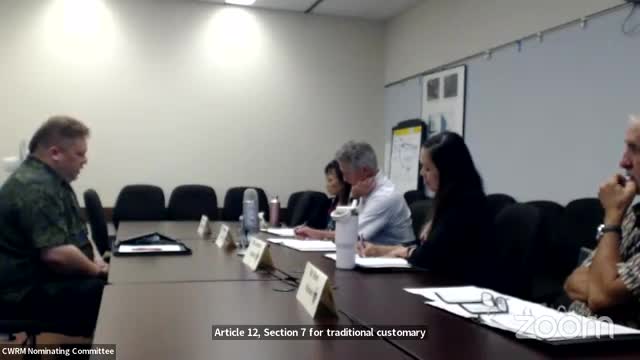Water Management Crisis Sparks Call for Native Hawaiian Involvement
October 22, 2024 | Water Resource Management, Commission on, Executive , Hawaii
This article was created by AI summarizing key points discussed. AI makes mistakes, so for full details and context, please refer to the video of the full meeting. Please report any errors so we can fix them. Report an error »

In a recent government meeting, officials discussed critical water resource management issues, emphasizing the need for greater involvement of the Native Hawaiian community in decision-making processes. The conversation highlighted the importance of adhering to the water code, which mandates consideration of Native Hawaiian rights in water allocation decisions, particularly in cases involving the Department of Hawaiian Home Lands (DHHL).
The meeting underscored the necessity of integrating Native Hawaiian perspectives into various water management plans, including those administered by state agencies such as the Department of Agriculture and the Department of Health. Participants noted that many agencies still struggle to apply essential analyses, such as the kapaka ohaaina, which is crucial for understanding and respecting Native Hawaiian water rights.
A significant focus was placed on the aging irrigation systems, particularly the Manuili Waimanau Irrigation System, which has been in operation since the days of the Waimanalo Sugar Plantation. Officials pointed out that millions of gallons of water are lost due to leaks in these systems, and they advocated for capital improvement projects to repair and modernize the infrastructure. The implementation of technology, such as SCADA systems, was highlighted as a means to enhance water management efficiency and responsiveness.
The meeting also addressed the challenges posed by military leases and the need for proactive measures in water resource management. Participants expressed a desire to engage the Native Hawaiian community in discussions about water management strategies, particularly in light of ongoing environmental concerns, such as the contamination of aquifers and the need for improved wastewater management systems.
Overall, the discussions reflected a commitment to fostering community involvement and addressing both immediate and long-term water resource challenges in Hawaii. The officials emphasized the importance of being proactive rather than reactive, urging for continuous engagement with the community to develop sustainable solutions for water management.
The meeting underscored the necessity of integrating Native Hawaiian perspectives into various water management plans, including those administered by state agencies such as the Department of Agriculture and the Department of Health. Participants noted that many agencies still struggle to apply essential analyses, such as the kapaka ohaaina, which is crucial for understanding and respecting Native Hawaiian water rights.
A significant focus was placed on the aging irrigation systems, particularly the Manuili Waimanau Irrigation System, which has been in operation since the days of the Waimanalo Sugar Plantation. Officials pointed out that millions of gallons of water are lost due to leaks in these systems, and they advocated for capital improvement projects to repair and modernize the infrastructure. The implementation of technology, such as SCADA systems, was highlighted as a means to enhance water management efficiency and responsiveness.
The meeting also addressed the challenges posed by military leases and the need for proactive measures in water resource management. Participants expressed a desire to engage the Native Hawaiian community in discussions about water management strategies, particularly in light of ongoing environmental concerns, such as the contamination of aquifers and the need for improved wastewater management systems.
Overall, the discussions reflected a commitment to fostering community involvement and addressing both immediate and long-term water resource challenges in Hawaii. The officials emphasized the importance of being proactive rather than reactive, urging for continuous engagement with the community to develop sustainable solutions for water management.
View full meeting
This article is based on a recent meeting—watch the full video and explore the complete transcript for deeper insights into the discussion.
View full meeting
